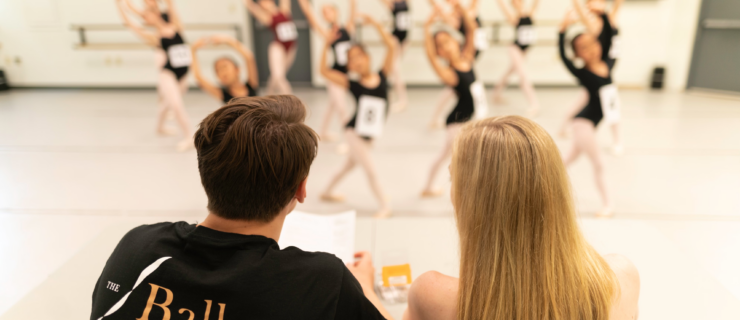Why You Should Consider a Choreography Intensive This Summer
If you’re looking to explore a new aspect of your artistry, a choreography-focused intensive is a perfect opportunity to deepen your skill set as a dancemaker. Whether you’ve only dabbled in composition or you’re already working toward a choreographic career, the growing number of programs available means there’s an option suited for you. Dance Spirit spoke with the directors and attendees of two top choreography intensives to help you weigh your options.
Find the Right Fit
Choreography intensives come in all shapes and sizes, so it’s important to know what you’re looking for. Many have tracks or different programs that cater to a range of participants, from dancers who simply want more exposure to the choreographic process to emerging choreographers looking to delve deeper into their craft. Regional Dance America’s National Choreography Intensive, for instance, has three tracks: one for dancers, one for budding choreographers and one for more established dancemakers. Some programs may be tailored to a specific genre, like contemporary ballet or musical theater, while others welcome a range of styles.
Applying to be a choreographer at one of these intensives typically involves submitting a highlight reel showing your past work. However, an interview, a letter of recommendation or a statement of intent about why you want to participate in a program is often equally important. “People have come to the intensive who have worked with large groups, and people have come who have only been able to work on themselves,” says Josh Prince, founder and artistic director of Dance Lab New York. “But it’s not about being a polished professional,” he stresses. “It’s about learning, and being willing to learn.”

Students in class at Regional Dance America’s National Choreography Intensive (Gary Taylor Photography, courtesy NCI)
Broaden Your Tool Kit
And there’s much more to learn about the choreographic process than just coming up with steps. As a dancemaker, you need to be able to understand music and storytelling, command a studio, and communicate effectively with your dancers and other professional collaborators.
“I remember I was used to working with people who think like me and whom I danced with every day,” says Kristianna Henthorn, a former participant in RDA’s NCI. “I quickly learned how to work with people I didn’t know and find out how they move, so I could present them in their best light. I had to learn to be in charge, and how to handle the room as a choreographer.”
At an intensive, you’ll likely be faced with daily tasks or challenges, intended to build your creative approach. “They come fast and furious, just like in the real world,” says Prince. These types of exercises will expose you to the gamut of obstacles you may face as a choreographer, and give you the training and insight to handle them. This skill set is something you can use whether you’re at the front of a studio creating or contributing to the choreographic process as a dancer. After all, choreography is a two-way street, and having the confidence to improvise, share your ideas, and actively participate in creating is essential to any career in dance.

An instructor leads class at Dance Lab New York’s Choreography Intensive (Whitney Browne, courtesy Dance Lab New York)
Experience Mentorship and Collaboration
Master teachers at choreography intensives also foster open dialogue with the participants, deepening the experience of mentorship. Instructors act as sounding boards, working in your corner to help you overcome roadblocks or fears. According to Henthorn, the feedback she received from her fellow choreographers (whose ages ranged from teens to mid-60s) helped her find her own artistic voice. “It was incredible to have encouragement and support from people that had all different experiences and backgrounds,” she says.
Choreo intensives can also offer exposure to other collaborators, such as musicians, composers, costumers, stage directors, set designers and more. Robert Redick, a choreographer based in NYC, says that the collaboration aspect at Dance Lab New York’s Choreography Intensive is what hooked him right away. “I saw real-life experiences that I could aim for, and real resources that I could take advantage of. I saw where my career could go.”
A choreography intensive can illuminate a pathway you never knew was there before. “If I hadn’t done the intensive, I would have been too overwhelmed to take advantage of other opportunities that came my way,” says Henthorn. “They’re going to give you the tools, motivation and the focus to take you somewhere,” says Redick. “Every artist has a starting point, and this could be your starting point.”




